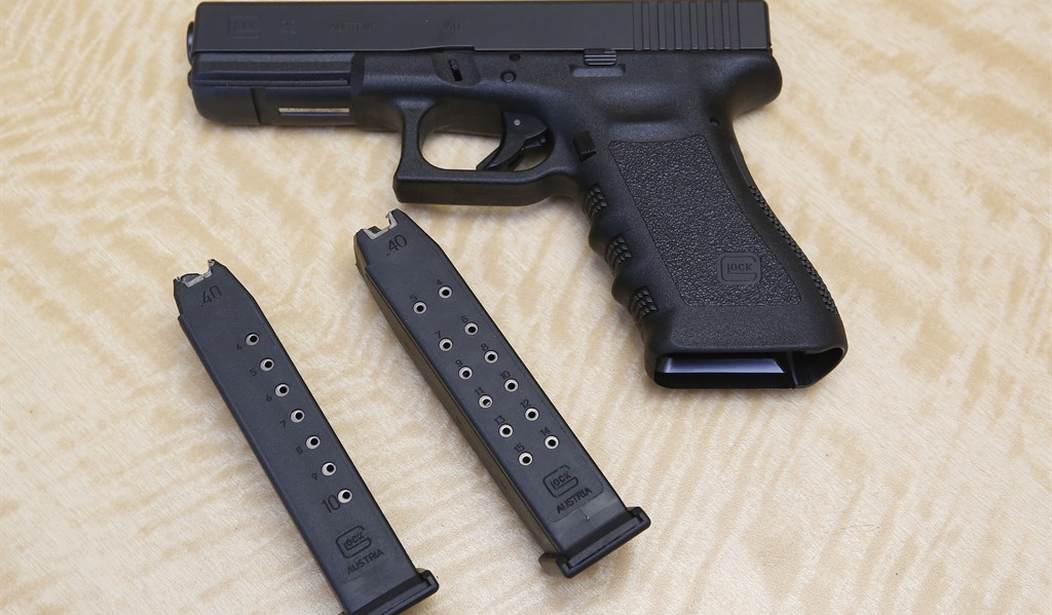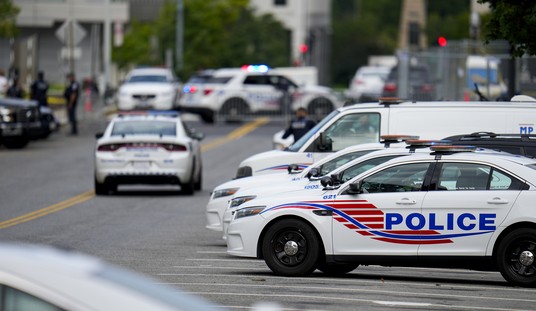In June, 2022 the Rhode Island legislature approved a ban on "large capacity" magazines that prohibits the sale of any ammunition magazine that can hold more than ten rounds, while demanding existing owners either permanently modify their magazines to comply with the law, sell them to an FFL, destroy them, or take them out of state.
Ocean State Tactical, along with four individual gun owners, promptly challenged the law in federal court, but a U.S. District judge turned down their request for an injunction, and on Thursday the First Circuit Court of Appeals did the same. In its ruling the three-judge panel concluded that while the banned magazines might be commonly owned, they're not commonly "used" in self-defense.
Given the lack of evidence that LCMs are used in self defense, it reasonably follows that banning them imposes no meaningful burden on the ability of Rhode Island's residents to defend themselves. True, one could imagine Hollywood-inspired scenarios in which a homeowner would need to fend off a platoon of well-armed assailants without having to swap out magazines. But we read Bruen as requiring us to ascertain how a regulation actually burdens the right of armed self-defense, not how it might be imagined to impose such a burden. And even if we were to consider imagined burdens in our analysis, we would accord them little weight. Otherwise, the assessment of how a regulation burdens the right of armed self-defense would always find a substantial burden.
The First Circuit largely adopted the warped reasoning that the state of California used to defend its own magazine ban; since there are relatively few documented cases of self-defense where more than ten rounds were fired, incidents like those must be rare, and therefore it's no big burden on the right of self-defense to declare these magazines off-limits to everyone but police (who also, incidentally, rarely have to fend off a platoon of well-armed assailants).
After deciding that the magazine ban doesn't present a burden to lawful gun owners, the panel then looked for any longstanding national tradition of analogous laws. The panel couldn't find any laws directly touching on the capacity of a firearm at either the time of the Founding or the ratification of the Fourteenth Amendment, because no such laws existed. Instead, the judges pointed to "bans on sawed-off shotguns, which the Supreme Court has deemed unprotected by the Second Amendment, see United States v. Miller, 307 U.S. 174, 177 (1939), restrictions on machine guns, most of which have been effectively banned nationally since 1986, see 18 U.S.C. § 922(o), and even the severe restrictions placed on Bowie knives by forty-nine states and the District of Columbia in the nineteenth century once their popularity in the hands of murderers became apparent."
In each instance, it seems reasonably clear that our historical tradition of regulating arms used for self-defense has tolerated burdens on the right that are certainly no less than the (at most) negligible burden of having to use more than one magazinet o fire more than ten shots.
Does it really? Because it seems reasonably clear to me that the panel simply brushed aside the Supreme Court's instructions when it comes to looking for those historical analogues. The only real comparison they cite that comes anywhere close to the 1791/1868 timeframes that the Supreme Court says are the appropriate periods in American history to look at are bans on Bowie knives, but as attorney and scholar Dave Kopel has already shown us, 19th century laws on Bowie knives often treated them the same as they did handguns; "Sales bans were rare, with Tennessee joined only by Arkansas, in 1881. The norm in other states was limits on concealed carry and sales to minors, and penalties for misuse."
Kopel also notes that there were three state Supreme Court cases in the 19th century dealing with Bowie knives, and only of the outcomes suggest that an outright ban was seen as constitutional at the time.
- Georgia: Prohibiting the sale of Bowie knives violates the Second Amendment. Prohibiting concealed carry does not.
- Tennessee: Prohibiting concealed carry of Bowie knives does not violate the state constitution.
- Texas: The state constitution and the Second Amendment guarantee the right to own and carry Bowie knives, but extra punishment for a crime committed with a Bowie knife is constitutional.
The Tennessee Supreme Court ruled in an 1840 case that Bowie knives "are efficient only in the hands of the robber and the assassin. These weapons would be useless in war. They could not be employed advantageously in the common defence of the citizens. The right to keep and bear them is not, therefore, secured by the constitution."
As Kopel argues, the Tennessee judges simply got it wrong.
In 1836, the people of Texas had used Bowie knives to "rise up to defend their just rights," in their War of Independence from Mexico. The Texans won the war at the Battle of San Jacinto on April 21, 1836, when they stormed the Mexican breastworks, and used their Bowie knives to rout and put to flight the army of Mexican dictator Santa Ana.
More importantly, Kopel points out that in Heller, the Supreme Court explicitly rejected the findings of the Tennessee Supreme Court in Aymette v. State by "erroneously, and contrary to virtually all other authorities," concluding that the right to keep and bear arms was limited solely to fighting a tyrannical government. The Heller majority was also adamant that the Second Amendment's protections are not limited to the types of arms used by militia.
The First Circuit panel went even further in ignoring what the Supreme Court has said previously about the arms that are protected by the Second Amendment when it boldly stated that, "[t]here is no question that semiautomatic weapons fitted with LCMs much more closely resemble the proscribable 'M-16 rifles and the like' than they do traditional handguns.'
As the Seventh Circuit recently observed, the AR-15 (a semiautomatic weapon frequently used in combination with LCMs) "is almost the same gun as the M[-]16 machinegun." Indeed, the two weapons "share the same core design, and both rely on the same patented operating system."
Additionally, LCMs minimize one of the few meaning fuldifferences that do exist between M-16s and semiautomatic weapons: rate of fire. M-16s have a higher fire capacity than AR-15s, but LCMs can greatly reduce the need to reload, allowing shooters to fire many rounds in a shorter amount of time. Thus, LCMs enable semiautomatic weapons to function even more like their proscribable automatic counterparts: Both M-16s and semiautomatic firearms equipped with LCMs can rapidly hit very many human targets. And while empirically this is not a useful feature for self-defense, it is presumably conducive to combat in war zones.
Good lord. We just heard oral arguments at the Supreme Court in the challenge to the ATF's bump stock ban, and even the DOJ attorneys acknowledged that the federal statute defining machine guns is based on the "function of the trigger" and not the rate of fire. Yet here the First Circuit blithely ignores that semi-automatic firearms shoot one round for every pull of the trigger to falsely conclude that large capacity magazines turn semi-automatic guns into machinegun-like weapons.
The First Circuit had one more eye-rolling moment in its opinion; citing as a final historical analogue a handful of 18th century municipal ordinances that "limited the quantity of gunpowder that a person could possess, and/or limited the amount that could be stored in a single container." According to the panel, those laws, which were meant to prevent damage done in a fire, are akin to limiting the number of bullets that can be held in a single magazine. The panel undercut its own argument, however, when it noted that "HB 6614 is more modest than founding-era limits on the size of gun-powder containers in that it imposes no limits on the total amount of ammunition that gunowners may possess."
In other words, it's not really analogous at all.
It seems to me that the First Circuit panel reached its decision first and worked backward to try to find an argument that would suit their belief that the magazine ban should be upheld. The only way to do so was to reinterpret the Court's previous decisions so broadly that they're rendered meaningless, and to essentially engage in the interest-balancing test that SCOTUS has flatly rejected in Second Amendment cases.
There is no historical tradition of limiting firearm capacity. The magazines in question are commonly owned for a variety of lawful purposes (including, but not limited to self-defense). Those two facts alone should be enough to bring down Rhode Island's magazine ban, but if Rhode Islanders are going to get any relief from the courts when it comes to this infringement on their Second Amendment rights, it's going to have to come from the Supreme Court and not the First Circuit or the district court judge overseeing the case as it moves to a final judgement.









Join the conversation as a VIP Member